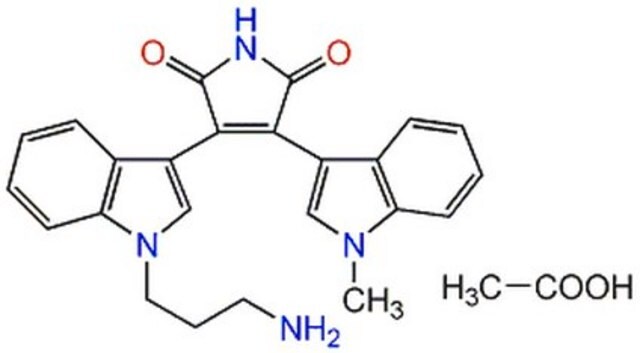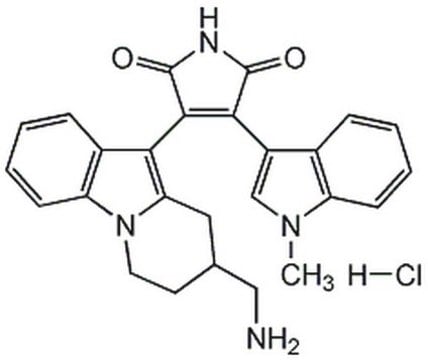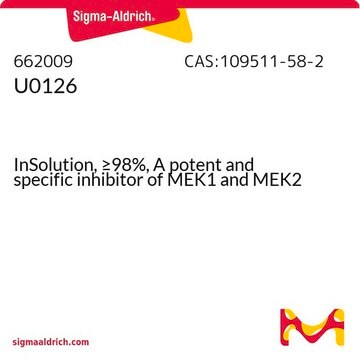365251
Gö 6983
A potent, cell-permeable, reversible, and ATP-competitive inhibitor of protein kinase C (PKC) that inhibits several PKC isozymes.
Synonym(s):
Gö 6983, 2-[1-(3-Dimethylaminopropyl)-5-methoxyindol-3-yl]-3-(1H-indol-3-yl) maleimide, Go 6983
About This Item
Recommended Products
Quality Level
assay
≥98% (HPLC)
form
solid
manufacturer/tradename
Calbiochem®
storage condition
OK to freeze
protect from light
color
orange-red
solubility
DMSO: 100 mg/mL
shipped in
ambient
storage temp.
−20°C
InChI
1S/C26H26N4O3/c1-29(2)11-6-12-30-15-20(18-13-16(33-3)9-10-22(18)30)24-23(25(31)28-26(24)32)19-14-27-21-8-5-4-7-17(19)21/h4-5,7-10,13-15,27H,6,11-12H2,1-3H3,(H,28,31,32)
InChI key
LLJJDLHGZUOMQP-UHFFFAOYSA-N
General description
Biochem/physiol Actions
PKCα and PKCβ
Warning
Other Notes
Stempka, L., et al. 1997. J. Biol. Chem. 272, 6805.
Gschwendt, M., et al. 1996. FEBS Lett. 392, 77.
Legal Information
Storage Class
11 - Combustible Solids
wgk_germany
WGK 3
Certificates of Analysis (COA)
Search for Certificates of Analysis (COA) by entering the products Lot/Batch Number. Lot and Batch Numbers can be found on a product’s label following the words ‘Lot’ or ‘Batch’.
Already Own This Product?
Find documentation for the products that you have recently purchased in the Document Library.
Our team of scientists has experience in all areas of research including Life Science, Material Science, Chemical Synthesis, Chromatography, Analytical and many others.
Contact Technical Service








